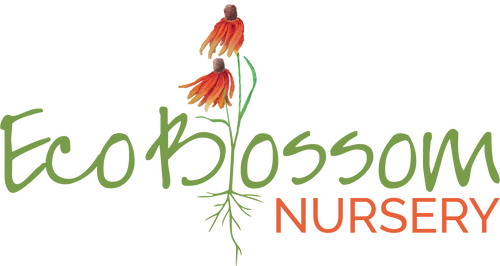Baptisia bracteata (Cream Wild Indigo)
Also known as Longbract Wild Indigo. Synonym: Baptisia leucophaea.
Cream Wild Indigo is a long-lived, deep-rooted, compact, low growing perennial featuring cream to light yellow flowers which are followed by light green seedpods that turn black in the fall. The velvety leaves and attractive seed pods provide season long interest. The flowers are essential for queen bumblebees emerging from winter hibernation. Plants may not bloom until their second or third season of growth.
Cream Wild Indigo is a legume (fixes nitrogen in the soil) that can be slow to mature. It attracts native bees and is a host plant for multiple butterflies. It is easily grown in average, dry to medium, well-drained soil in full sun to light shade, it tolerates hot and humid summers, poor soils and drought once established. The flowers will be showier on dry sites. This species can be damaged by strong winds. This plant prefers open sun with little competition from larger perennial plants.
Cream Wild Indigo has a deep taproot and does not respond well to being moved.
AT A GLANCE
| Texas native |
Yes |
| Water use | Medium, dry |
| Sun exposure | Full sun to light shade |
| Bloom color | White, yellow |
| Bloom time | Spring, summer |
| Mature height | 1-2.5 ft |
| Mature spread | 2-2.5 ft |
| Attracts | Bees, butterflies |
| Host plant | Black-Spotted Prominent, Wild Indigo Duskywing, Hoary Edge, Orange Sulphur and Frosted Elfin butterflies. |
| Deer resistant | Moderately |
| Poisonous | Toxic if ingested. Plant is unpalatable and consumption is rare except when the animal is forced to eat it, for instance in the hay. |
| Notes | Native bee and bumble bee friendly. |
DISTRIBUTION MAPS
 Present in state Present in state |
 Present in county and native Present in county and native |
 Native to North America, but adventive & escaped in state Native to North America, but adventive & escaped in state |
 Not present in state Not present in state |
 Present and rare, native in county Present and rare, native in county |
 Previously present, now extinct Previously present, now extinct |
 Questionable presence (cross-hatched, regardless of color) Questionable presence (cross-hatched, regardless of color) |









